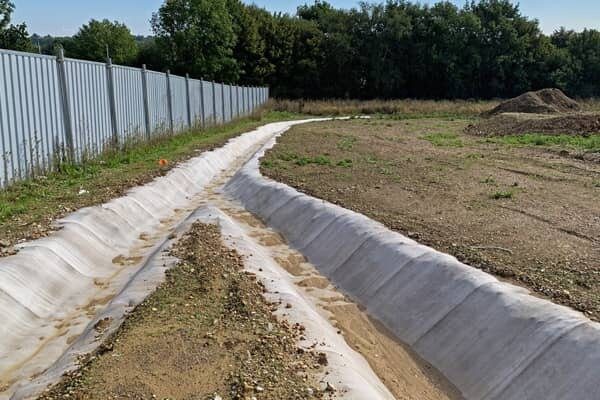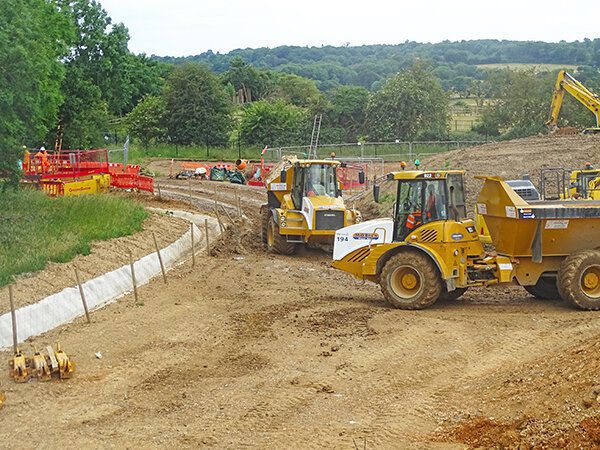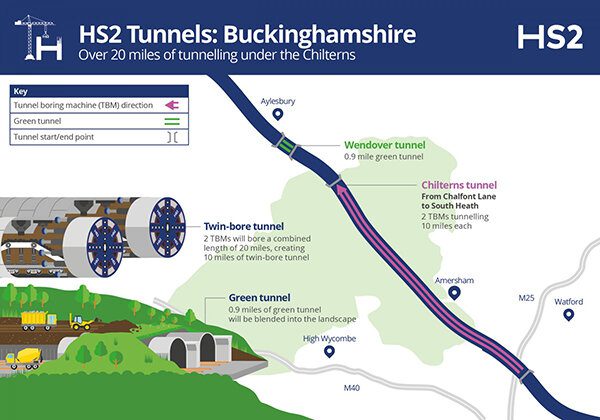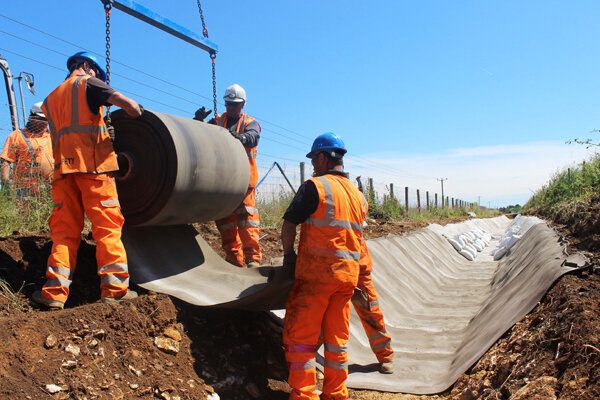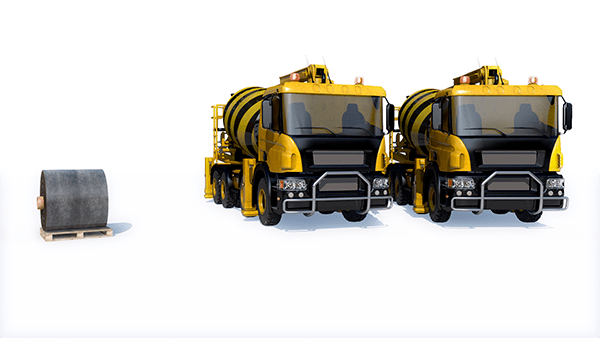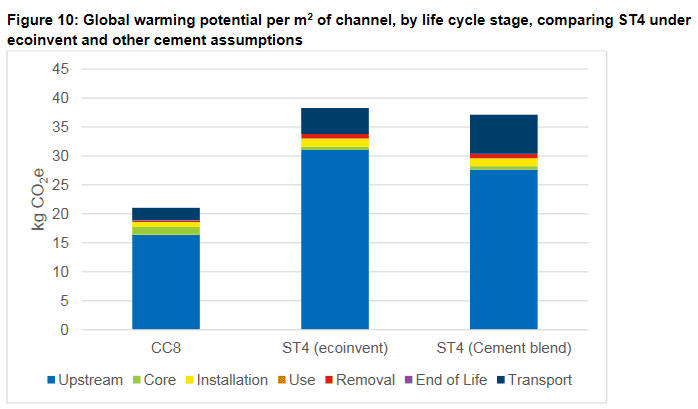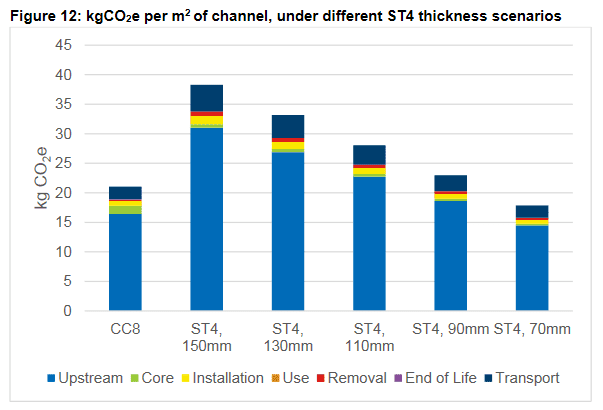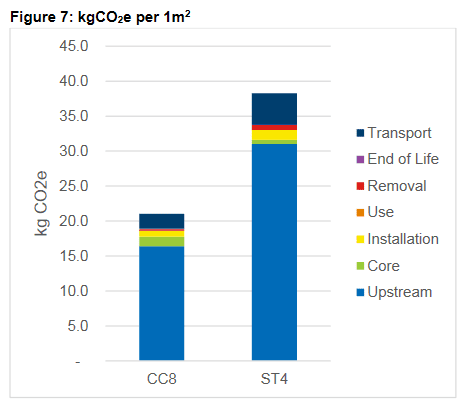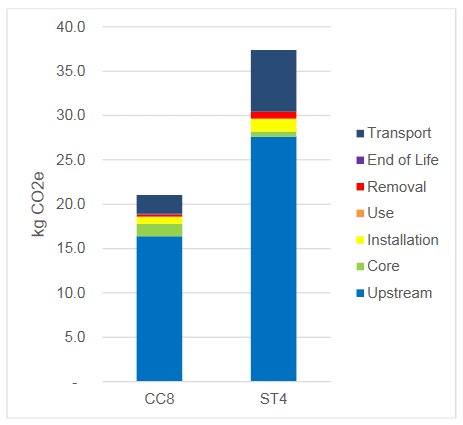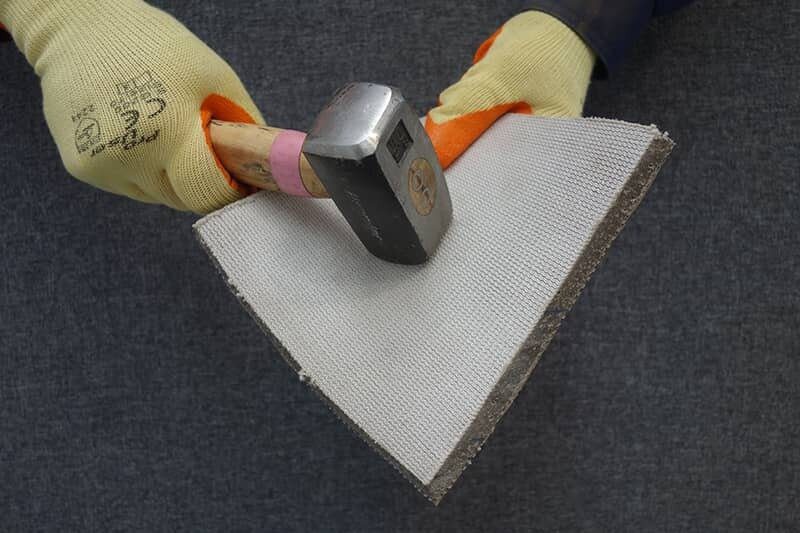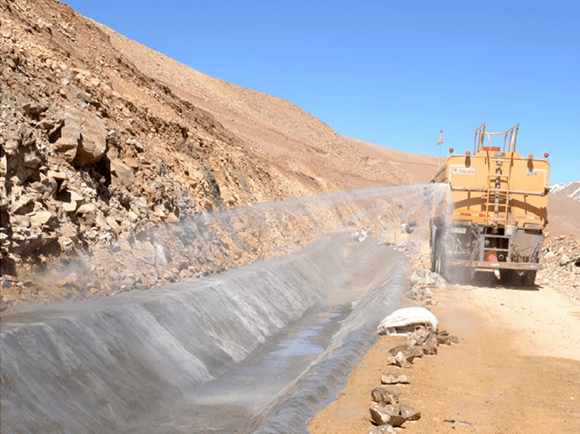HS2 and Concrete Canvas®: Working Towards Sustainable Construction
What is Sustainable Construction?
The theme of sustainability and carbon reduction is a huge driver for change across multiple sectors at the moment.
Here in the UK, the Government has legally committed the UK to reduce its greenhouse gas emissions to net-zero by 2050.
Achieving net zero, or carbon neutrality, means finding more sustainable and environmentally friendly practices and solutions to reduce our carbon footprint to the point of balancing carbon emissions with its removal from the atmosphere.
It is estimated that the construction industry accounts for around 45% of the UK’s carbon emissions. As a result, the construction industry must find ways of improving its practices for more sustainable operations.
A guide from GoConstruct suggests that achieving sustainability in the construction sector means having an end goal of “an environmentally friendly building or environment”. The guide notes that “during construction projects, care must be taken to reduce waste and energy consumption where possible and protect the natural environment around the site”.
Leading the way in meeting these goals is Britain’s biggest infrastructure project. HS2 Ltd is taking significant steps to reduce the impact of their construction work on the environment.
Read on to find out how Concrete Canvas® is contributing to the reduction in carbon emissions for HS2.
Concrete Canvas® for the Rail Sector
The cement industry is one of the two largest producers of CO2. It is estimated that around 4.1 billion tonnes of cement were produced in 2020, along with a resulting 1.5 billion tonnes of CO2.
Concrete Canvas Ltd’ Technical Manager, Lee Church says:
“Concrete has been around for thousands of years. We’re aware that it produces carbon but you can’t just stop using concrete; it’s an essential building material, so we just need to be a bit more selective and creative in how we use it. That’s where Concrete Canvas GCCMs come in.”
Concrete Canvas® (CC), known as Concrete on a Roll™ is a flexible, concrete-filled geosynthetic which provides a thin and durable concrete layer when hydrated. CC is part of a revolutionary new class of materials called Geosynthetic Cementitious Composite Mats (GCCMs).
The material is used for erosion control and weed suppression applications across multiple sectors worldwide. In the UK, CC’s largest sector is Rail. For HS2, CC was specified over ST4 poured concrete to line crest perimeter drainage channels – the material’s biggest use for the rail network in the UK over the last ten years.
Crest drainage is typically required to prevent saturation of embankments and potential slip onto a track below as a result. On Compound 1 the application was required to prevent flooding of the site.
Concrete Canvas® has been specified for two projects within the HS2 scheme as a temporary solution, replacing ST4 poured concrete with the channels designed to be removed when the compounds are no longer required.
Broadly, use of the environmentally friendly, lower carbon alternative to traditional concrete for HS2 is contributing to reduction of the scheme’s carbon footprint. In simple figures, a lifecycle report from Ricardo Energy and Environment (Ricardo) compared the Global Warming Potential (GWP) of lining a channel in CC8™ versus using 150mm of ST4 poured concrete and found that CC has a GWP 45% less than that of the ST4 poured concrete.
More specifically, CC assists in protecting the scheme’s construction environments, as well as reducing waste and carbon emissions through transportation.
Environment
HS2 Ltd claims that they are also working to deliver Britain’s biggest environmental project through “miles of ecological and landscape investments” in England.
To date, 60 new habitats have been created along the route, including grasslands, ponds and plantings to wildlife. In addition, 350,000 trees have been planted as part of the objective to plant a total of seven million trees and shrubs along the route over the course of the project.
Concrete Canvas® is an environmentally friendly, lower carbon alternative to traditional concrete solutions and has been used by various environment agencies on numerous projects, including several on environmentally sensitive sites.
CC is a fantastic solution for durable concrete applications, without the mess associated with the installation of poured and sprayed concretes due to rebound or potential environmental damage as a result of the cement content.
CC can be installed in live watercourses, and underwater and has a minimal loss of fines at around 3% compared to the average 10-15% experienced when using specialist underwater concretes.
The specialist high early strength concrete used in CC has a limited alkaline reserve and the PVC backing is phthalate free, minimising the product’s impact on the environment. As a result of these properties, CC can be safely installed even on environmentally sensitive sites without adverse effect to wildlife or the local ecology.
Furthermore, the fibrous top surface layer of CC is the perfect surface for the growth of moss and algae, particularly in channel lining applications in the UK climate. As a result, the material ‘greens’ over time and can theoretically assist in balancing out CC’s carbon footprint as a result of algae and moss being able to absorb large amounts of CO2 and remove nitrogen from the air.
Materials and waste
Reduction of material waste is an important aspect of sustainable construction for both HS2 Ltd and Concrete Canvas Ltd.
HS2 plans to use the chalk that will be excavated during boring of the Chiltern tunnels to create and plant a new habitat at such a scale – drastically reducing waste associated with the tunnel boring works.
Further waste reduction on the site was provided by the unique properties of CC.
Lee Church explains:
“One bulk roll of our CC8™ material is the equivalent of two 6m3 ready-mix poured concrete trucks. Our material is supplied dry, so, you’re not pre-mixing it then transporting it to site and it’s a lot lighter, quicker and easier to install, and then you just use the available water sources that you have nearby to hydrate the material.”
The material’s installation process was simple. The bulk rolls of CC were deployed from an excavator-mounted spreader beam, deployed transversely across the channel profile and the material then cut to the exact required length. This method prevents unnecessary material waste and results in a more economical installation process.
CC can be hydrated using fresh or salt water – it does not need to be potable – meaning many projects will use water found on site, from existing live water sources or water storage.
Manufacturing
The idea of “sustainable concrete” is becoming a priority for clients and consultants when considering design solutions for civil engineering projects.
Of course, concrete cannot be completely sustainable but there are ways in which manufacturers are now looking to improve their processes to reduce carbon footprint in manufacturing.
As a fairly new product – hitting the market just over 15 years ago – CC was invented with the environment in mind and Concrete Canvas Ltd continues to allocate 20% of annual turnover to R&D, with the aim to improve its products and manufacturing processes.
The recent Ricardo report found that when comparing CC8™ to ST4 concrete, the GWP of the ‘upstream impacts’ which Lee says consists of “the carbon cost of sourcing the raw materials, producing the cement clinker and producing the geosynthetics that goes into our product”, is approximately only 60% of that of the ST4 upstream impacts.
The report states:
“While the upstream stage is the key stage for both systems, ST4’s impact is 89% higher than CC8’s. This is primarily due to two factors; the amount of upstream materials and the type of cement.”
Overall, when considering all life cycle stages from cradle-to-grave, CC8™ provided a GWP 45% lower than that of ST4.
Transport emissions
Transportation of heavy materials such as the chalk cake or concrete being used in the Chiltern tunnels boring and construction results in high levels of carbon emissions expelled by the transporting vehicles. However, construction of the treatment facility on the Compound 1 site eliminated the need for its transportation to an external treatment plant and a considerable burden on the M25 and surrounding roads, therefore reducing the project’s carbon footprint.
The installation of CC over alternatives for the required crest drainage works had further positive impact on the project’s carbon output.
Lee explains that on sites that pose access difficulties – in this case, Compound 1 being incredibly busy and already heavily trafficked – “there’s quite a logistical challenge in getting poured materials or wet concretes to the sites. So, there’s the environmental saving in reducing the CO2, but there’s also the practical benefits as well.”
A standard bulk roll – which provides the equivalent coverage as two 6m3 ready-mix trucks – can be transported on a single pallet. The CC material for the HS2 Compound 1 project was delivered via articulated vehicles (FORS), which can transport 16 palletised bulk rolls. A total of 11 bulk rolls and one custom length bulk roll were specified for Compound 1 were sent in staggered deliveries to the site, along with all required ancillaries, in just three vehicles.
As a result, there was an enormous reduction in transportation requirement in comparison to ST4, which would have required dozens of ready-mix trucks to supply enough concrete to cover the same area.
The Ricardo report explores the GWP of every stage of CC’s lifecycle (cradle to grave). In order to do this, a hypothetical project was used as an example to ensure accurate data. Lee explained:
“With HS2 in mind, we wanted to look at the potential carbon savings on a fictitious 500m long channel in Birmingham. All of the Concrete Canvas material would be manufactured in Wales and then transported 200km by road to that fictitious site and then we assumed the concrete batching plant was within 20km of the site. So, we could compare the difference in transport.”
The report found that, with these parameters in place, the GWP for the transportation stage (production to end-of-life) of ST4’s lifecycle was 4.51 tonne-km per square metre of channel (tkm/m²), while the transportation stage of CC8’s lifecycle was 2.12tkm/m²; a saving of over 50%, despite the CC being transported ten-times as far as the ST4 in this scenario.
Why CC for HS2?
Invented and manufactured with the environment in mind, CC has a low washout rate, low alkaline reserve and phthalate free PVC to minimise environmental impact. Furthermore, the top surface promotes growth of carbon neutralising organisms. The installation process itself is capable of entirely eliminating material waste.
In assisting the journey to carbon neutrality on Britain’s biggest infrastructure project, CC is simultaneously helping to work towards the UK’s aim to achieve net zero greenhouse emissions by 2050 by providing a solution capable of contributing to a more sustainable construction industry.
